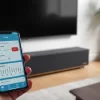The healthcare sector has recently become more in demand among various organizations and professionals. Therefore, the development of mobile applications for their use in healthcare is constantly evolving, as specialists tend to experiment with medical software. It is due to instant access to medical services and the ability to monitor various innovations and processes in the field of healthcare.
The essence of the development of the application and its purpose in healthcare
Software development is a process of developing mobile applications that help track your health problems in real mode. Here are some illustrative examples:
- referral;
- medical consultation;
- registration of sick leave;
- health insurance;
- creation of an electronic medical record;
- management of medical personnel.
Therefore, the appointment of applications for healthcare carries many necessary functions for medical professionals and users. There is a wide variety of healthcare applications. Such diversity is related to the purpose of its use.
There are the following categories of developed applications:
- medical workers;
- patients;
- medical organizations.
Applications for medical personnel and organizations have a more complex software structure, enhanced functionality, and increased reliability. A more simplified form is being created for patients, including the full range of health monitoring.
Things to consider before developing an application
Creating a healthcare application is complex consisting of various processes. Several factors must be considered for an outsourcing healthcare software development to be effective. Let’s look at the most common of them.
Follow Compliance Rules
Various legal requirements need to be met when creating mobile healthcare applications. Currently, there are approximately 50 different correspondences.
Single purpose
As you know, there are various applications for the intended purpose: the treatment of a referral to a doctor, the creation of sick leave, and so on. Therefore, when developing an application, focus only on a single purpose and do not offer multiple functions in one application.
Compatibility
The application’s primary function is to transfer data from one electronic device to another. For the effective exchange of information, a complete and reliable interaction of electronic devices with each other is necessary.
Decide on the functionality of the application
The relevance of the developed application directly depends on the functions included in it. This range is different, but some parts are often included in the application:
- health tracking;
- making payments;
- creation of reporting;
- making appointments.
In addition to these features, developers can optionally include many different features.
Interface
The convenience of the user interface affects the use of the application. The efficiency of the menu functionality, transmission, and receipt of information is essential.
Safety and reliability
The application must be completely protected from hackers and external attacks. The application software must be protected from weaknesses and high security.
Testing
During the development of the application and at its completion, it is necessary to test individual parts of the program and, subsequently, the entire program. This approach ensures the detection of various errors and shortcomings in development.
Decide on equipment
The developed application should work not only on a smartphone. You can create a wearable application or a desktop version. Therefore, it is necessary to develop several types of hardware.
Selecting an Application Programming Interface
This function is essential at various stages of development: creating an account, logging into social networks, and connecting the application to servers and the database.
Doctor in the development team
It is necessary to exclude incorrect information contained in the application. A doctor’s presence will help bring data into the application being created correctly from a medical point of view.
Development stages
To properly create a healthcare application, you must clearly understand all the creative processes. Therefore, a specific plan for making an application is required.
Formulation of the problem
It is necessary to know the needs of the user audience and understand the problems that need to be solved with the application being developed. Determine the needs of the medical market. Particular attention in the development of the project must be considered hidden costs.
Choice of platform and technologies
Deciding on the application’s Android, iOS, or Internet platform is necessary. It is essential to create absolute new application compatibility.
Application start location
The application is created for a large audience of users, but it is necessary to consider the country and current medical legislation.
Design
The interface plays an important role, but the age category must be considered. The older generation prefers simplicity and convenience, while younger users prefer colorful and unique features.
Contact developers
Hiring a professional development team will ensure rapid development and efficient operation of the application, considering the set requirements. Specialists will create a scalable application with various vital functions running smoothly.
Creating an MVP
An important factor can be the creation of an MVP instead of an optimal application. Contact the developers to identify critical USPs and required features, then develop the application.
Testing
Testing is an essential process in development. Testing will ensure correct functioning by eliminating weaknesses in the software.
Performance monitoring
At the end of testing, launch applications for use. Monitor its performance using special tools. When using it, consider user comments and adjust the application if necessary.
Conclusion
Application development is a complex process, which is a complex of decisions. Take into account all the recommendations during development and follow a step-by-step guide. The application developed by specialists will be functional, scalable, and, most importantly, in demand among users.










